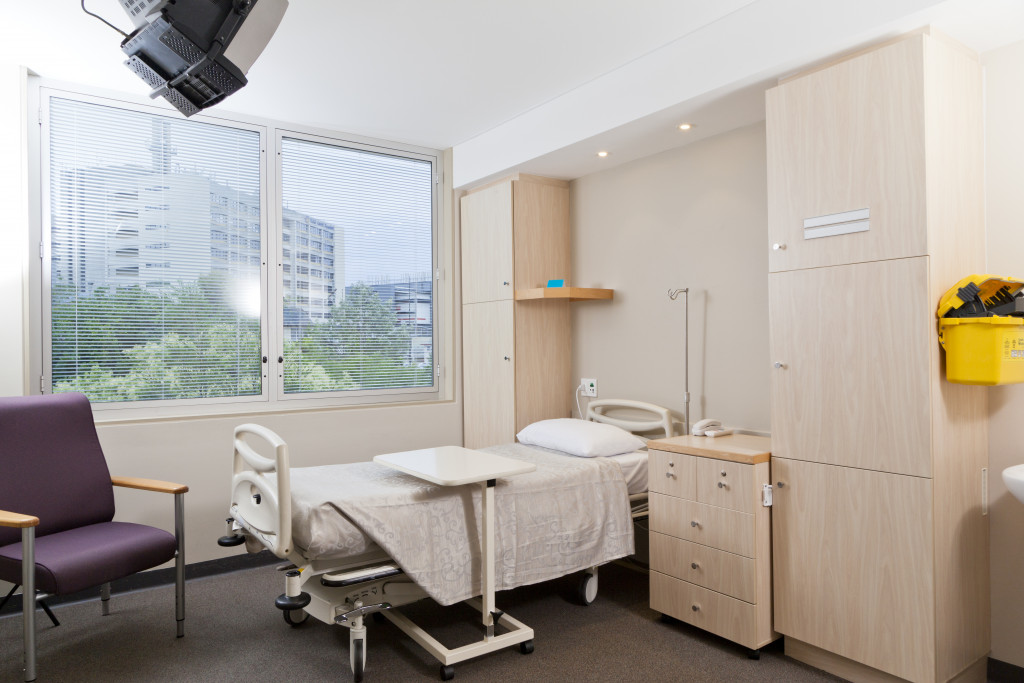Disclaimer: This website provides health information for educational purposes only and is not a substitute for professional medical advice, diagnosis, or treatment. Always seek the guidance of a qualified healthcare provider with any questions you may have.
If you’ve been hospitalized at least once, chances are you were confined in a room with plain white walls. The space was completely bare, the only furniture being a bench or a chair for a chaperone. There wasn’t even a plant or fresh flowers anywhere, too.
The same sight is what you probably see as well when visiting loved ones in a hospital. Though such drab design is a bit understandable considering that hospitals should be clean and sterile, they can be quite dreadful, as if they promote more sickness than health.
What healthcare designers probably don’t realize is that the spaces we dwell in affect our well-being. In fact, “healing” home design is a big trend for interior design. It incorporates healing elements in a space, like natural light and plants, two of which tend to be absent in hospital rooms.
As patients, we couldn’t barge into a hospital room and redecorate it. But we can at least bring gifts to our sick loved ones that will help brighten their moods and speed up their healing.
That said, here are the decorations that can benefit a confined patient:
1. Natural Light
Though not a form of decor as it is a design feature, natural light helps with a patient’s circadian rhythm. It is especially essential for the elderly because, without it, they can become delirious and confused.
If a room doesn’t have natural light, the overhead light fixtures should be full-spectrum bulbs, which are designed to mimic daylight. Put potted plants into the space to compensate for the absence of sunlight. Ensure that you’ve bought low light-tolerant plants so that they wouldn’t die.
Greens can boost a patient’s mood, as it can evoke renewal. Seeing plants grow healthily may encourage them to improve their health fast, too.
2. Healing Crystals
Hospitals aren’t likely to decorate their rooms with crystals because not only are they expensive, but it also goes against everything medical professionals had been taught. The use of crystals in healing ailments may have been practiced for centuries now, but modern medicine contradicts it all the same. Therefore, lend or gift your sick loved one the crystals, placing it near them.
3. Live-Edge Pieces

Live-edge pieces, usually wooden tables, have different health benefits, too. Willow, for one, contains salicin for headaches. If you or a friend are confined in an international hospital while touring, buy a live-edge piece for the private room and consider it your souvenir, too. It will become more special that way, as it will carry a memory.
4. Textures
Textures aren’t only wool and the like. Depending on a patient’s preference, it can be sleek surfaces and geometric lines, or pillows and quilts. Kids usually prefer softer textures, so give them stuffed animals and pillows. Teen or adult patients, on the other hand, will like textures that remind them of home, just like kids, although some may gravitate towards a no-frills style. Therefore, find out what a confined loved one likes before gifting them textured stuff.
5. Psychological Needs
Lastly, a room should provide a patient’s psychological needs so that they can gain a sense of order. For example, if their life is too predictable, the eclectic decor may elicit spicing things up. Conversely, if their life is chaotic, a uniformed decor set may stimulate the organization.
Seeing things that energize patients and make them happy is the key to help them heal faster. When their well-being is nourished just as much as their bodies, they’ll regard their confinement more positively, associating it with recovering rather than depression and isolation.




